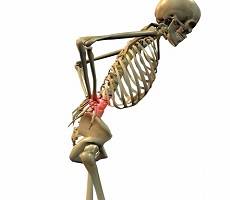February 25, 2014
Musculoskeletal disorders rate highlights scale of ergonomic challenge
More working days were lost last year to back, neck and muscle pain than any other cause. The latest figures from the Office of National Statistics (ONS) show that although there has been an overall downward trend in sickness absence in the UK over the last two decades; with 131 million days lost in 2013, down from 178 million days in 1993, at 30.6 million days lost, the greatest number of staff sick days in 2013 were due to musculoskeletal problems. Regulations and guidance relating to ergonomics in the workplace (the Health and Safety (Display Screen Equipment) Regulations 1992), were published over 20 years ago; and despite being amended in 2002, that’s still aeons in technology terms. The typical modern worker now routinely uses tablets, mobiles and other digital devices; whether at work, on the move or at home.
Aside from MSDs the other main culprit for sickness absence remains mental ill health. According to the ONS figures, mental health problems such as stress, depression and anxiety also contributed to a significant number of days of work lost in 2013 at 15.2 million days.However, the most common reason given for sickness absence in 2013, accounting for 30 per cent, were minor illnesses which cover sickness such as cough and colds. Because this type of illness tends to have shorter durations it accounted for around 27.4 million days lost.
The report also exposes some interesting anomalies, some of which are easy to decipher, such as why the self-employed have lower absence rates:
- Sickness absence rates have fallen for both men and women since 1993 with men consistently having a lower sickness absence rate than women.
- Sickness absence increases with age but falls after eligibility for the state pension.
- Sickness absence has fallen for all age groups since 1993, but has fallen least for those aged 65 and over.
- There are lower sickness absence rates in the private sector but the gap with the public sector has narrowed over past 20 years.
- Of the larger public sector organisations sickness rates are highest for those working in the health sector.
- employed less likely than employees to have a spell of sickness.
- Largest workforces report highest sickness levels.
- Sickness absence rates are lowest for Managers, directors and senior officials
- Sickness absence rates are lowest in London.
To download a copy of Sickness Absence in the Labour Market click here.













March 3, 2014 @ 12:30 pm
Gosh, I didn’t realise the statistics were that high for back, neck and muscular pain. It’s definitely worth investing in a good chair then.